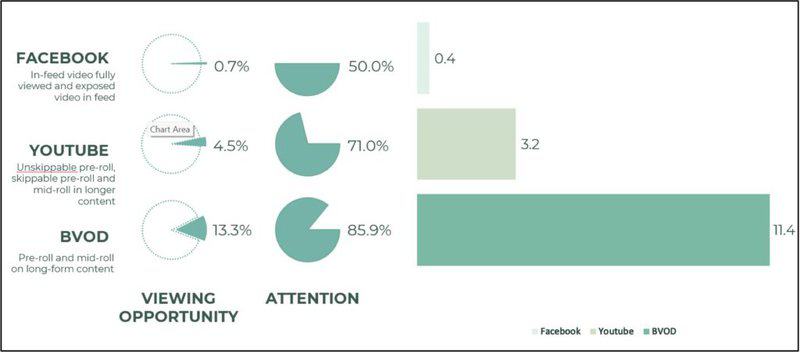Back in 2017 when ThinkTV commissioned Karen Nelson-Field to run the very first attention study, we hypothesised that aligning advertising with premium video would provide a strong sales outcome for advertisers.
Whether it’s the intimacy of a small screen, the convenience of a tablet or the shared experience on a large screen in the living room, independent research shows that TV, in all its, forms generates cracking levels of attention.
The research quantified what many had long suspected: moving pictures on screens, with sound on, are great at grabbing and holding people’s attention.

ThinkTV chief executive Kim Portrate
The combination of sight and sound has been proven time and again to tug at the heartstrings, elicit emotion and drive behaviour change or purchase intent.
Unsurprisingly, the research found a major contributing factor to attention is the coverage of the screen. According to Nelson-Field’s research, ads that take up 100 per cent of a screen generate twice the sales impact of ads that only fill half the screen.
And the bigger the screen, the better the attention. From a Total TV standpoint, that means the box in the living room continues to command a veritable shedload of attention.
So, it’s no surprise Nelson-Field’s research into the attention effects of cinema found ads at the movies deliver plenty of attention. Cinema and TV both serve ads that benefit from attention-grabbing moving images and sound. And just like the screen in our living rooms, cinema has a lovely big screen that’s hard to ignore, even when you’re munching on popcorn you had to take out a loan to purchase.
As other media platforms join in the discussion on the importance of attention, it’s time to advance the debate beyond eyes on screens alone. This is why ThinkTV commissioned research that takes the conversation a step further to calculate the opportunity for an ad to be viewed (or heard) and the attention consumers pay to it. Double the fun, eh?
Attention must be considered in combination with reach
The research confirmed that attention must be considered in combination with reach. Because a media channel’s viewing opportunity provides a sharper and more accurate assessment of the effectiveness of the inventory.
You could sum it up with a handy little formula like this:
Reach x viewing opportunity x attention paid = platform effectiveness
Take a platform like Facebook on mobile. It gets plenty of reach and reasonable levels of attention paid once an ad is available to be viewed. But when your thumbs travel the equivalent of two marathons a year scrolling through stories from friends at high speed, it creates little opportunity for attention to be paid.
Cinema is the reverse of Facebook. Attention research on the platform shows strong levels of attention once an ad is viewable. But the viewing opportunity is very limited with only a few available minutes per film. And, of course, the reach of cinema pales into insignificance when you crunch the numbers.
Data from Roy Morgan pegs the four-week cinema attendance at 25 per cent for the quarter ending September 2022. That’s approximately 5.4 million people visiting a cinema in a one-month period or roughly 1.3 million a week, assuming those people only go once a month.
Attention matters and it’s great everyone now agrees
Yes, attention is important, but for a platform with limited viewing opportunity, reach is hampered in its capacity in driving effective outcomes for advertisers.

Whenever we make these sorts of arguments, there’s inevitably a chorus of voices pointing out that we would say this. That we’re biased and I suppose we are, but it doesn’t change the facts.
I’m not saying you shouldn’t have cinema in your media mix. Every channel has its place. In 2021, research based on media mix modelling of 60 Australian brands demonstrated that to maximise sales, six per cent of your annual media budget should go to cinema.
While investment share may differ depending on the category you operate in and the specifics of your business, what doesn’t change is that scale needs to be at the heart of every media plan.
For the past five years, we’ve been saying attention matters and it’s great everyone now agrees. But reach and viewing opportunity remain critically important when it comes to effective advertising.
Kim Portrate is the CEO of ThinkTV.
See also:
ThinkTV Fact Pack: Latest Total TV report tracks growth of BVOD – live & on demand
